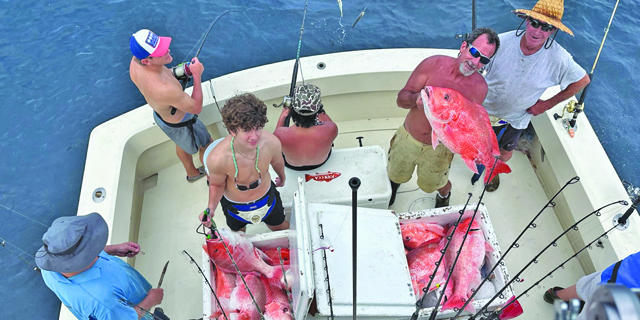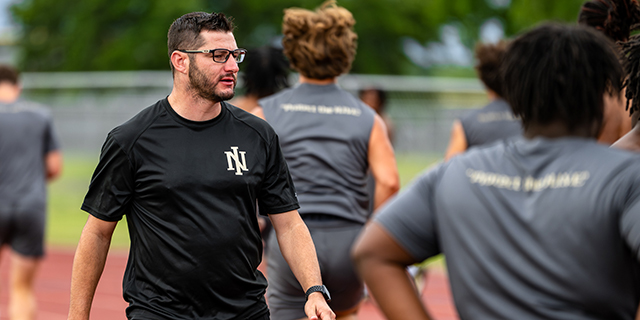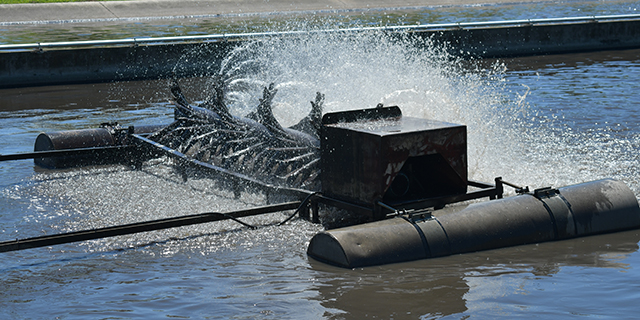MORE BASS FOR LAKE FAUSSE POINTE
Published 10:45 am Tuesday, June 10, 2025

- Florida bass fingerlings like these were stocked June 4 in Lake Fausse Pointe by four Louisiana Department of Wildlife and Fisheries' staffers from District 6. Biologist Brad Launey and staff met the LDWF's Booker Fowler Fish Hatchery truck at Lake Fausse Pointe State Park, then released 100,300 fingerlings in various areas across the lake. THE DAILY IBERIAN FILES
COTEAU HOLMES – It was beginning to look like Lake Fausse Pointe would miss out on getting Florida bass fingerlings in Spring 2025 until a state biologist got a call May 4 from the Booker Fowler Fish Hatchery.
The Louisiana Department of Wildlife and Fisheries’ state-of-the-art fish hatchery had a surplus of Florida bass fingerlings after all the orders from biologists across the state had been filled in April and May. The LDWF’s District 6 biologist manager said to send the baby bass that grow to large proportions to Lake Fausse Pointe.
District 6 biologists and staffers met the hatchery truck at Lake Fausse Pointe State Park, then released 100,300 Florida bass in what is known as the “back borrow pit,” or “stump field,” several Texaco Field canals, Sandy Cove, Tee Bayou area (the bayou itself and cypress trees around the mouth), and around Lake Fausse Pointe State Park.
Those Florida bass fingerlings, 1 ½ to 2 inches long, joined 2.1 million much, much smaller Florida bass fry stocked around the lake one day earlier this spring by LDWF. The larger fingerlings have a much higher survival rate than the tiny fry.
Four LDWF personnel went out in two boats loaded with bags of fingerlings from the hatchery truck, which arrived around 10 a.m.
It was the second release of Florida bass fingerlings in as many years at Lake Fausse Pointe by the crew from District 6. LDWD stocked 100,000 tiny bass in the lake on May 15-16, 2024.
Last year’s Florida bass fingerling stocking was the first since 2014 when the lake received 80,300. From 2000-2010, 1.7 million Florida bass fingerlings were stocked by the state agency in Lake Fausse Pointe.
Once released into the natural environment, those Florida bass fingerlings become snacks for at least five species of predator fish, mostly juvenile and largemouth bass, and smallmouth bass, based on a Texas Parks & Wildlife Department study. Losses of stocked fish to predation are as high as 27.5 percent within 12 hours of stocking, the study reported.
Surviving Florida bass fingerlings grow quickly under the right conditions as they adjust from feasting on pellets at the hatchery to finding their own meal in the wild.
District 6 biologist manager Brad Launey said during last year’s stocking those 1- to 2-inch long fingerlings could be 9 to 12 inches long in mid-May 2025. The key to growing, naturally, hinges on the forage base and habitat wherever the baby bass were released.
At the time, Launey emphasized LDWF isn’t trying to replace the native largemouth bass gene pool. LDWF introduces Florida bass in the lake to increase the opportunity for anglers to catch a trophy-sized bass, “those 8-plus pound bass.”
While the lake didn’t get annual infusions, so to speak, of Florida bass fingerlings, it did get millions of Florida bass fry in 2019, 2021, 2022 and 2023. Those fry averaged 7.36 mm long, or 0.286220 inches long (453.49237 grams of fry equal 1 pound).
Survival rates for Florida bass fry, which appear to be the size of dirt particles in the hatchery truck tanks before being released into a natural habitat, are as high as 7 percent, according to a study by the TPWD.





